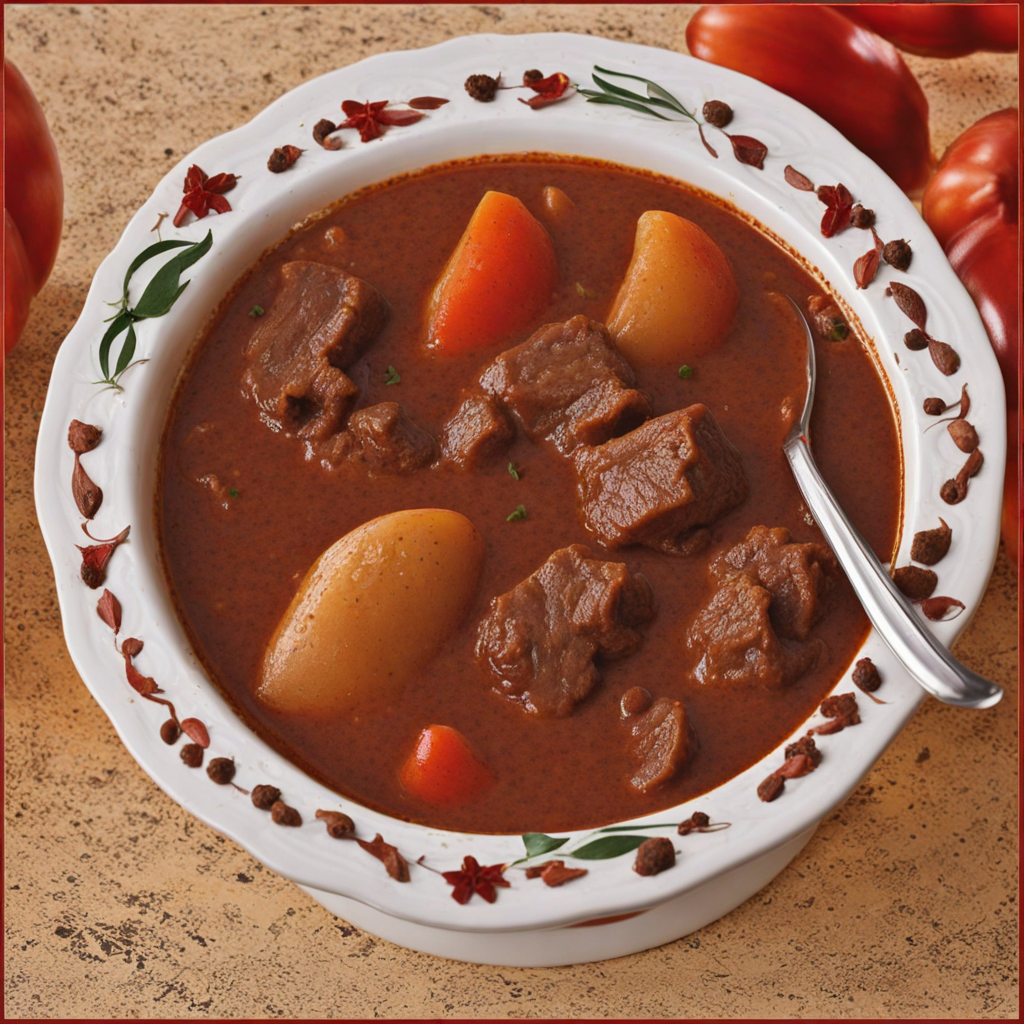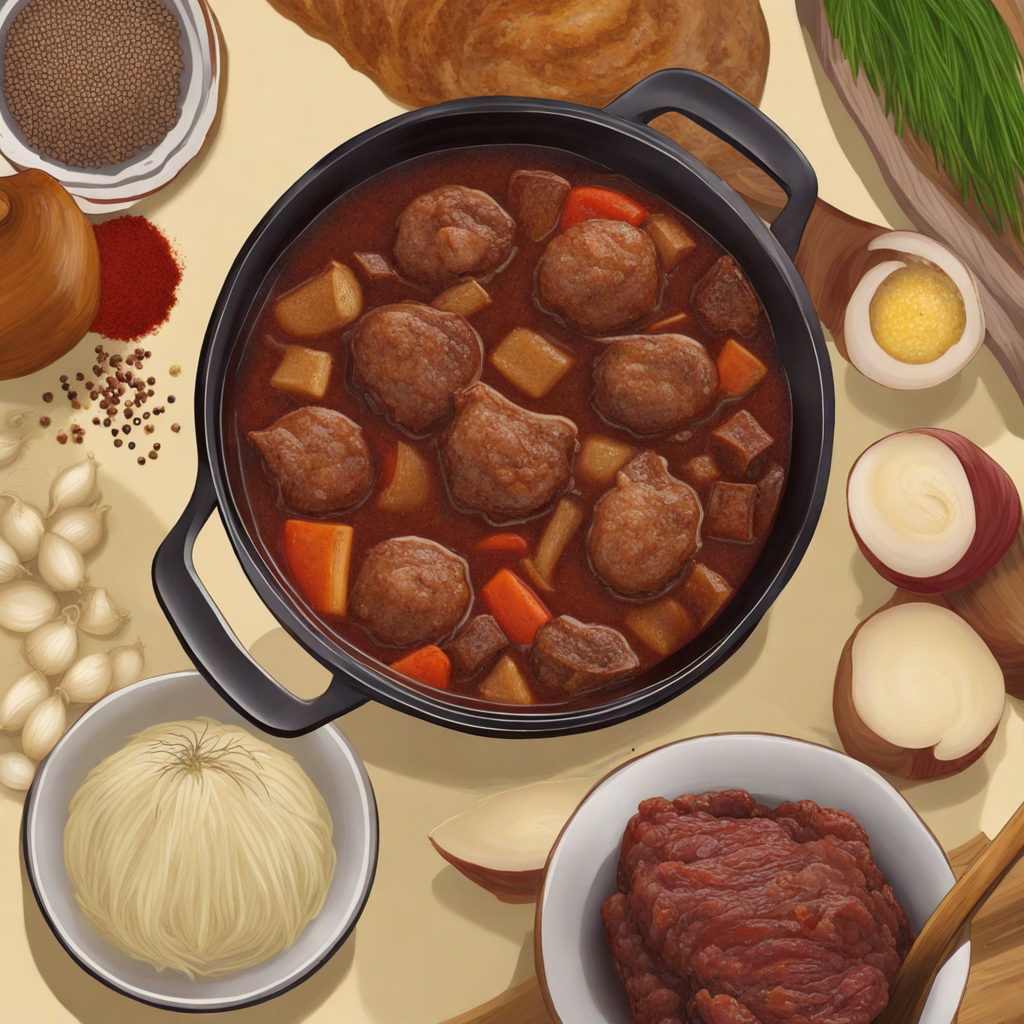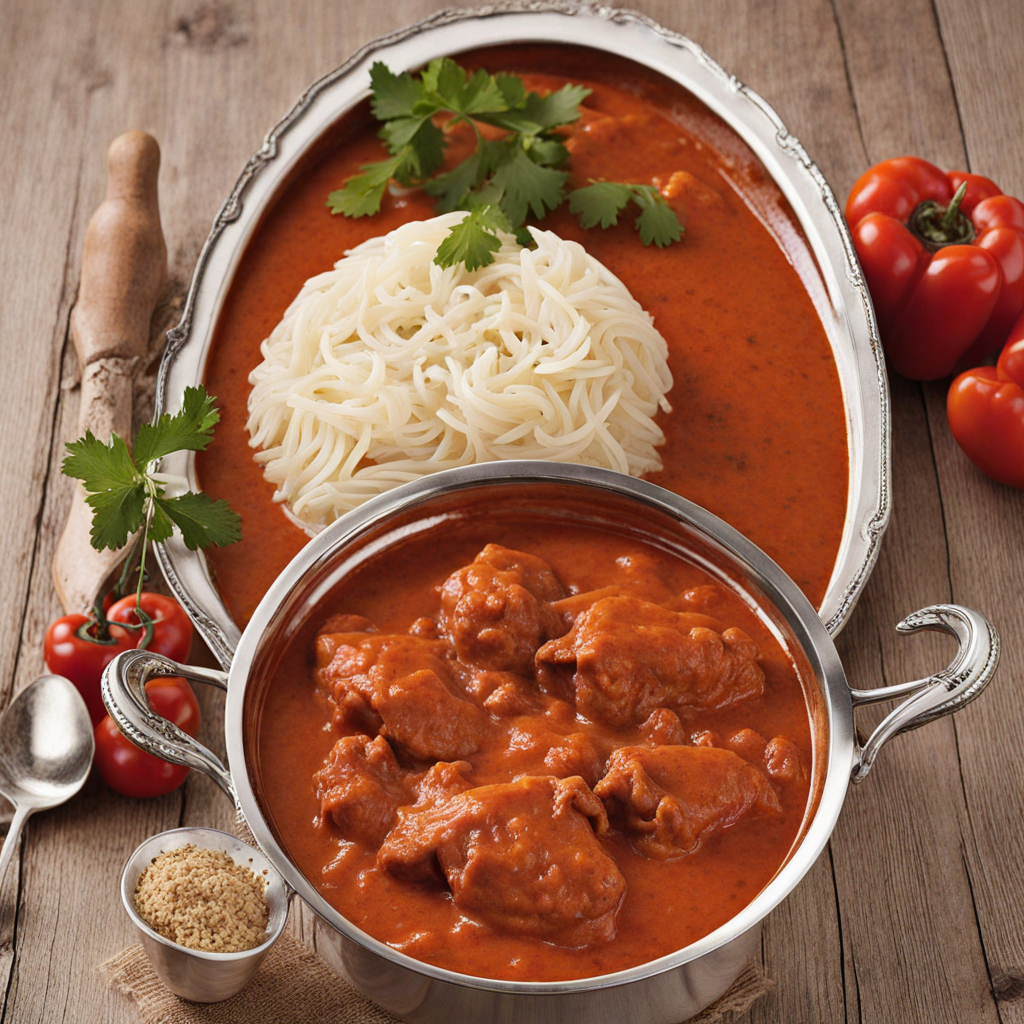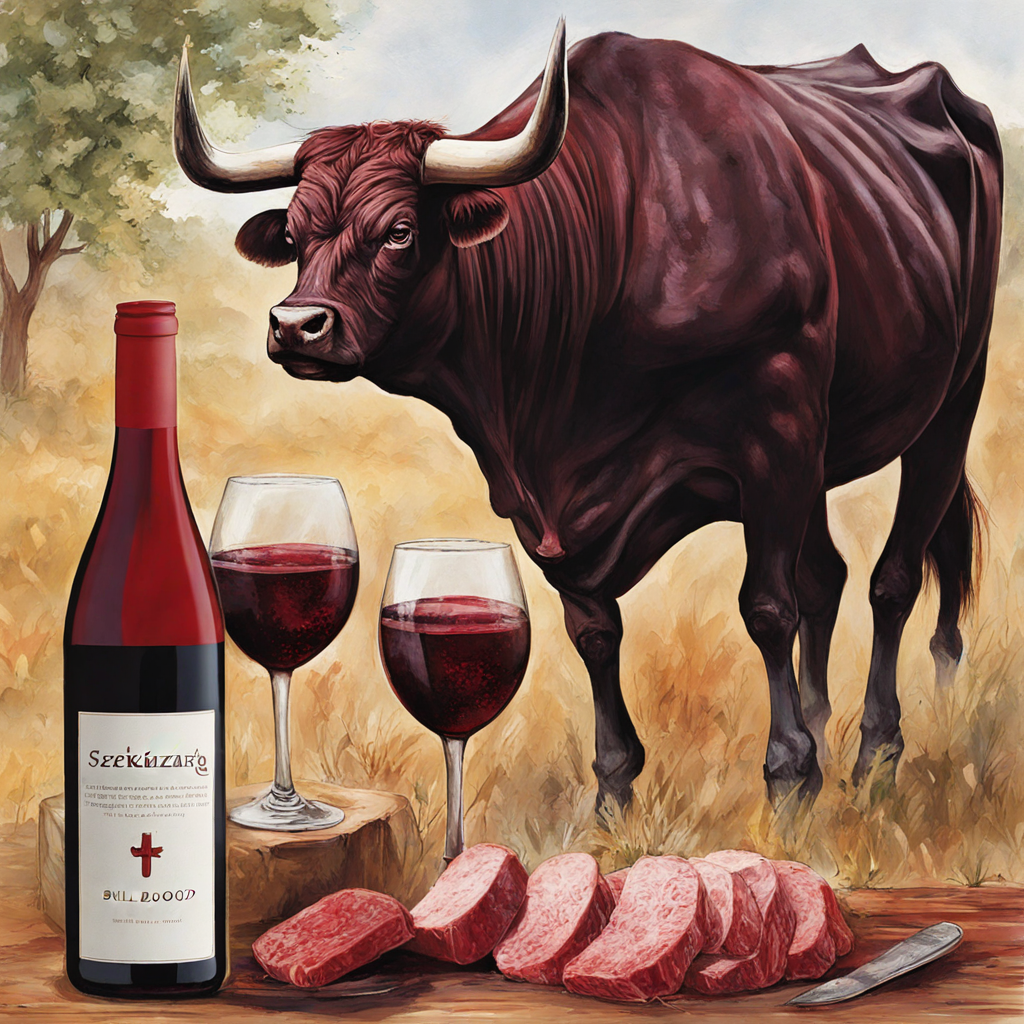Marhapörkölt
Marhapörkölt is a traditional Hungarian beef stew that embodies the rich flavors and culinary heritage of Hungary. This dish features tender chunks of beef, typically from the shoulder or shank, which are slow-cooked to perfection in a robust sauce made with a generous amount of sweet Hungarian paprika, onions, and various spices. The paprika is the star ingredient, lending a vibrant red hue and a smoky depth that defines the stew. Garlic, caraway seeds, and sometimes even a hint of chili are added for complexity, creating a well-rounded flavor profile that tantalizes the palate. The cooking process is an integral part of Marhapörkölt, as it relies on slow simmering to allow the flavors to meld and the meat to become incredibly tender. Traditionally, it is made in a heavy pot or cauldron over an open flame, but it can also be prepared on the stovetop. The dish is often accompanied by a hearty serving of nokedli (Hungarian dumplings) or egg noodles, which soak up the rich sauce and enhance the overall dining experience. Each bite is a comforting embrace of flavors, making it a popular choice for family gatherings and festive occasions. What sets Marhapörkölt apart is its versatility; while the classic recipe is beloved, variations exist across Hungary that incorporate regional ingredients or personal touches. Some cooks may add vegetables like bell peppers or tomatoes, while others might include a splash of wine or a dollop of sour cream for added richness. Regardless of the variations, Marhapörkölt remains a cherished dish that showcases the heart and soul of Hungarian cuisine, inviting anyone who tries it to savor its delightful taste and warmth.
How It Became This Dish
Marhapörkölt: A Culinary Journey Through Hungarian History Origins and Etymology Marhapörkölt is a quintessential dish in Hungarian cuisine, embodying the rich flavors and cultural heritage of the region. The term "pörkölt" itself comes from the Hungarian word "pörkölni," which means "to sear" or "to roast." This culinary technique involves browning meat in a pot with fat, creating a deep, complex flavor that is characteristic of many traditional Hungarian dishes. The prefix "marha" signifies beef, thus marhapörkölt translates directly to "beef stew" or "beef pörkölt." The origins of marhapörkölt can be traced back to the nomadic tribes that roamed the plains of the Pannonian Basin in Central Europe, particularly the Magyars, who settled in present-day Hungary around the 9th century. These tribes were predominantly pastoralists, relying heavily on livestock for sustenance. The cooking methods they employed were simple, focusing on slow-cooked meats that could be prepared over an open flame or in clay pots. Such methods laid the groundwork for what would evolve into marhapörkölt. Cultural Significance Marhapörkölt is more than just a dish; it is a symbol of Hungarian identity and communal life. Traditionally, pörkölt has been a staple at family gatherings, festivals, and communal feasts, reflecting the communal spirit of Hungarian culture. The dish is often served with "nokedli" (Hungarian dumplings) or "tarhonya" (egg barley), which are perfect for soaking up the rich sauce. In Hungary, food is deeply intertwined with social customs and traditions. Marhapörkölt is often associated with celebrations and gatherings, making it a beloved comfort food. It is also an essential dish for special occasions such as weddings, holidays, and family reunions. As a dish that requires time and care to prepare, it fosters a sense of togetherness, allowing families to bond over its preparation and enjoyment. Development Over Time As Hungary's culinary landscape evolved, so too did marhapörkölt. The dish absorbed influences from neighboring regions and cultures, reflecting the complex history of Hungary itself. The Ottoman Empire's presence in Hungary from the 16th to the 17th centuries introduced new spices and cooking techniques, which began to influence traditional Hungarian cooking. Paprika became a staple spice during this time, eventually becoming synonymous with Hungarian cuisine. The vibrant red color and smoky flavor of paprika transformed marhapörkölt, enhancing its richness and depth. In the 19th century, with the rise of nationalism and a renewed interest in folk traditions, marhapörkölt was celebrated as a dish that embodied Hungarian heritage. Cookbooks began to include variations of the stew, each region adding its unique twist. For example, in Transylvania, the dish might feature a mix of spices and vegetables, while in the Great Plain, it might be heartier with the addition of root vegetables and more robust flavors. This regional diversity contributed to the dish's popularity and establishment as a national treasure. The 20th century saw marhapörkölt gain international recognition, particularly after World War II. As Hungarians immigrated around the globe, they brought their culinary traditions with them. Marhapörkölt made its way onto menus in other countries, often adapted to local tastes but retaining its essence. In the United States, for instance, it has been embraced by Hungarian-American communities and has found a place in various food festivals and cultural events. Modern Interpretations In contemporary Hungary, marhapörkölt continues to be a beloved dish, often prepared in homes and served in restaurants. Chefs and home cooks alike take pride in their recipes, with some opting for traditional methods and others experimenting with modern techniques. Today, slow cooking has found a new avenue in electric pressure cookers and slow cookers, allowing for a quicker preparation time while still achieving the tender meat and deep flavors that are hallmarks of the dish. Moreover, marhapörkölt has also become a canvas for culinary creativity. Chefs are incorporating local, seasonal ingredients, adding twists such as wild mushrooms, smoked meats, or even gourmet touches like red wine reductions. These modern interpretations maintain the heart of the dish while offering new taste experiences. Culinary Legacy Marhapörkölt stands as a testament to Hungary's rich culinary legacy, symbolizing not only the country's agricultural roots but also its history of resilience and adaptability. The dish is featured prominently in Hungarian cookbooks, culinary festivals, and even competitive cooking events where chefs showcase their mastery of traditional techniques. In recent years, there has been a surge in interest in preserving traditional Hungarian recipes, with many young chefs and home cooks seeking to revive and celebrate their culinary heritage. Marhapörkölt remains a focal point in this movement, as it is a dish that tells the story of Hungary's past while being enjoyed in the present. Conclusion In conclusion, marhapörkölt is more than just a beef stew; it is a dish steeped in history, culture, and community. From its nomadic origins to its modern-day iterations, it has evolved while remaining a cherished part of Hungarian identity. As Hungary continues to embrace its culinary roots, marhapörkölt will undoubtedly remain a symbol of national pride and a delicious reminder of the country's rich gastronomic history. Whether served in a humble home or a fine restaurant, this dish is a celebration of flavor, tradition, and the enduring spirit of Hungary.
You may like
Discover local flavors from Hungary







